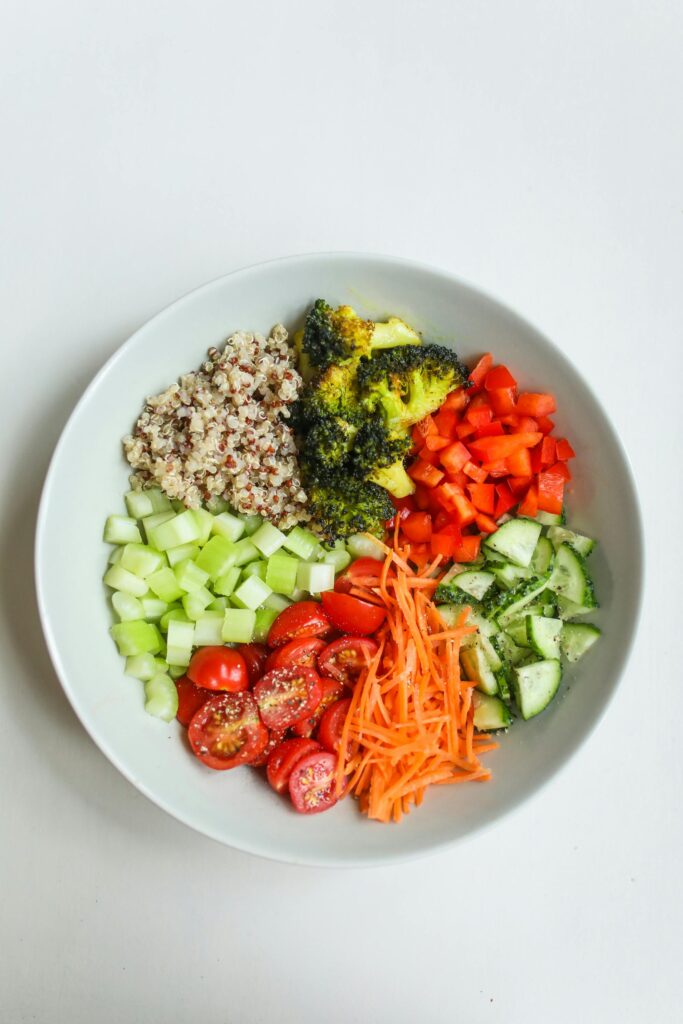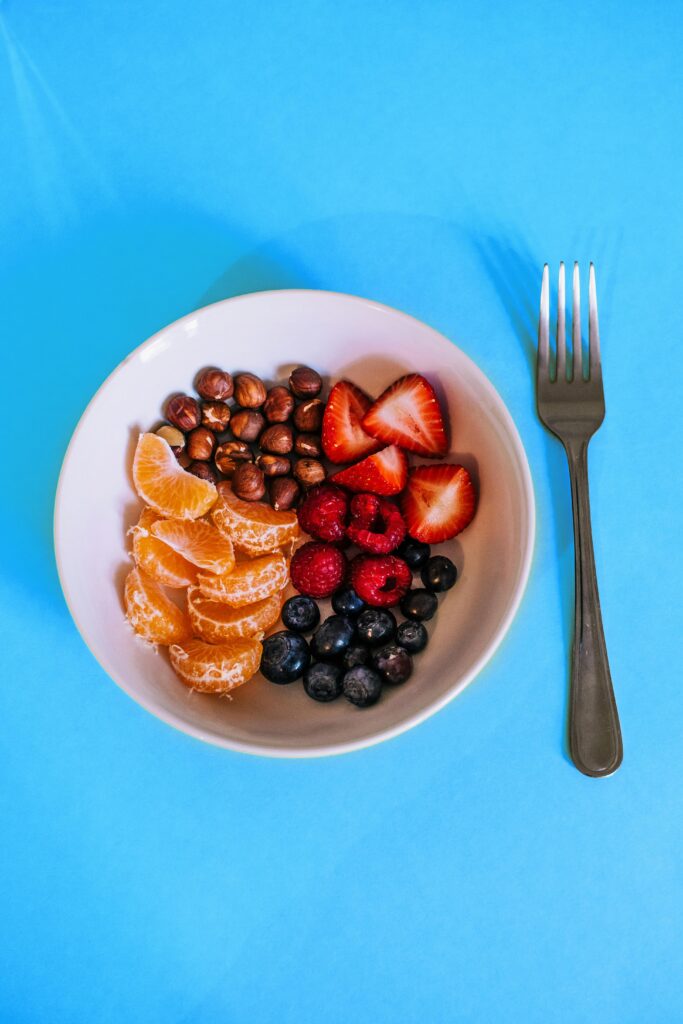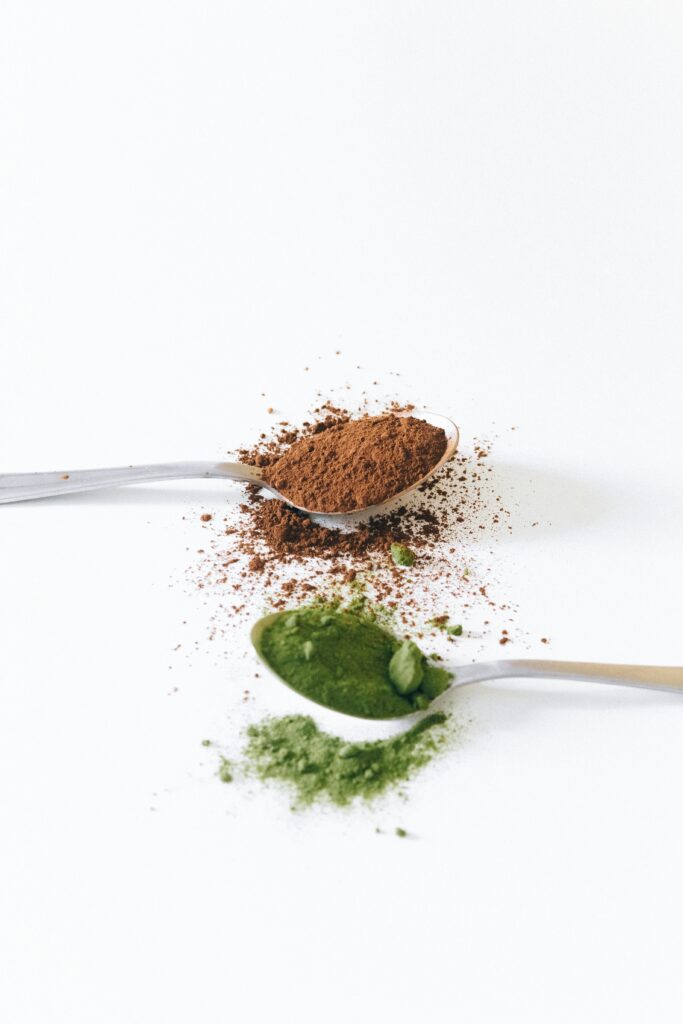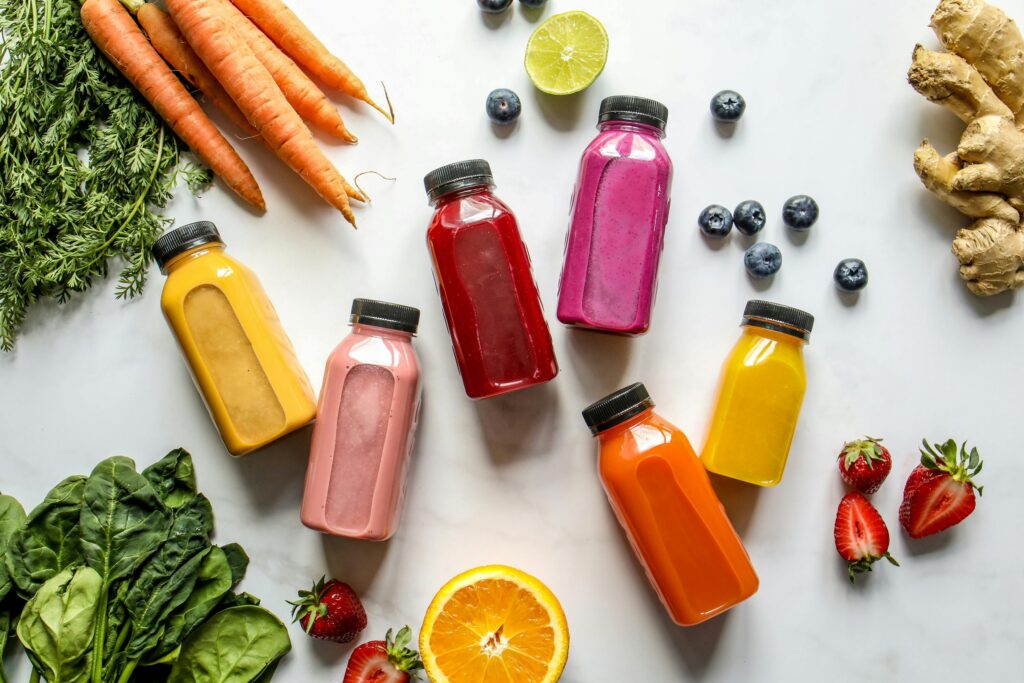Have you ever wondered what makes certain foods so powerful for your health? Superfoods have become a popular buzzword in health and nutrition. These nutrient-packed foods are known for their ability to support energy, immunity, and overall well-being. But what exactly are they, and why are they so important?
Here, you’ll discover the top superfoods to include in your diet. You’ll also learn how they can improve energy levels, strengthen your immune system, and promote overall health. By the end, you’ll have practical tips to add these power-packed foods to your routine easily.
What Are Superfoods?
Superfoods contain essential nutrients like vitamins, minerals, antioxidants, and healthy fats. These nutrients play a vital role in keeping your body healthy. Superfoods are often linked to boosting energy, improving immunity, and reducing the risk of chronic diseases.

However, it’s important to understand that superfoods aren’t magic. They can’t replace a balanced diet or cure diseases on their own. Instead, they work best when included as part of a varied and healthy eating plan. For example, combining superfoods like berries and leafy greens with whole grains, proteins, and healthy fats gives your body a broader range of nutrients it needs to function well.
Think of superfoods as nutritional powerhouses. Adding them to your meals is a simple way to enhance your overall health and support your body’s daily needs.
Top 10 Superfoods You Should Try
Including superfoods in your meals can be a simple way to enhance your health. Here’s a list of the top 10 superfoods, their key benefits, and how to easily use them:

1. Berries
- Benefits: Berries like blueberries, strawberries, and blackberries are rich in antioxidants. They help reduce inflammation, support heart health, and boost your immune system.
- How to Use: Add a handful to oatmeal, blend them into smoothies, or enjoy as a snack.
2. Leafy Greens
- Benefits: Leafy greens like spinach, kale, and Swiss chard are packed with fiber, vitamins A and C, and minerals like iron and calcium. They support digestion, strengthen immunity, and improve bone health.
- How to Use: Toss them into salads, stir-fries, or soups. You can also blend them into green smoothies.
3. Avocado
- Benefits: Avocados are loaded with healthy fats that support heart and brain health. They also provide potassium and fiber, which aid in digestion and muscle function.
- How to Use: Mash and spread on toast, slice into salads, or use as a creamy addition to smoothies.
4. Fish
- Benefits: Fatty fish like salmon, sardines, and tuna are excellent sources of omega-3 fatty acids. These fats support brain function, reduce inflammation, and lower the risk of heart disease.
- How to Use: Grill or bake fish with simple seasonings, or pair with vegetables for a wholesome meal.
5. Greek Yogurt
- Benefits: Greek yogurt is high in protein and contains probiotics that support gut health and strengthen immunity.
- How to Use: Enjoy with fresh fruits and a drizzle of honey for breakfast, or use as a base for dips and sauces.
6. Nuts and Seeds
- Benefits: Almonds, walnuts, chia seeds, and flaxseeds are packed with healthy fats, protein, and fiber. They provide long-lasting energy and support heart health.
- How to Use: Sprinkle over salads, mix into yogurt, or grab a handful for a quick snack.
7. Sweet Potatoes
- Benefits: These nutrient-rich root vegetables are high in beta-carotene, which supports eye health, and fiber, which promotes digestion.
- How to Use: Roast them as a side dish, mash them into soups, or bake sweet potato fries.
8. Beans and Lentils
- Benefits: Affordable and versatile, beans and lentils are excellent sources of plant-based protein and fiber. They help regulate blood sugar and improve heart health.
- How to Use: Add to soups, stews, or curries, or use them as a base for vegetarian meals.
9. Turmeric
- Benefits: Turmeric contains curcumin, a powerful antioxidant with anti-inflammatory properties. It’s known to support joint health and reduce inflammation.
- How to Use: Mix into warm milk (golden milk), stir into curries, or add a pinch to smoothies.
10. Citrus Fruits
- Benefits: Citrus fruits like oranges, lemons, and grapefruits are high in vitamin C, which boosts immunity and supports healthy skin.
- How to Use: Squeeze fresh juice into water or over salads, or eat them as a refreshing snack.
Lesser-Known Superfoods to Explore
While popular superfoods like berries and leafy greens are staples, some lesser-known options pack a powerful nutritional punch. These superfoods might not be as common, but they offer incredible health benefits worth exploring.
1. Seaweed
- Benefits: Seaweed, often used in Asian cuisines, is a nutrient-dense sea vegetable rich in iodine, which supports thyroid health. It also contains antioxidants that help fight free radicals and protect your cells.
- How to Use: Add dried seaweed to soups, salads, or sushi. You can also sprinkle seaweed flakes on popcorn or roasted vegetables for a flavorful twist.
- Fun Fact: Seaweed contains unique bioactive compounds not found in land-based vegetables, making it a superfood like no other! (Source: Journal of Applied Phycology, 2020)

2. Moringa
- Benefits: Known as the “miracle tree,” moringa leaves are loaded with vitamins A, C, and E, along with calcium, iron, and protein. Its anti-inflammatory properties help reduce swelling and support immunity.
- How to Use: Add moringa powder to smoothies, teas, or soups. Fresh moringa leaves can also be cooked like spinach in stews or stir-fries.
- Did You Know?: Moringa has been used for centuries in traditional medicine to improve energy levels and combat malnutrition in developing countries.

3. Spirulina
- Benefits: Spirulina is a type of blue-green algae packed with protein, B vitamins, and iron. It’s known to boost energy, improve immunity, and help detoxify the body.
- How to Use: Mix spirulina powder into smoothies, juices, or energy bars. It’s also available in tablet form for a convenient nutrient boost.
- Interesting Fact: NASA has considered spirulina a potential food source for astronauts due to its high nutrient content in a small volume. (Source: NASA Research, 2018)

Why Try These Superfoods?
These lesser-known superfoods are versatile, nutrient-rich, and can easily be incorporated into your diet. They not only enhance your meals but also provide unique health benefits that complement other popular superfoods. Start small by adding one to your weekly menu and see the difference!
Superfoods for Specific Health Goals
Different superfoods offer unique benefits depending on your health goals. Here’s a breakdown of superfoods tailored to specific needs and how they can help you achieve them.
1. For Energy
- Superfoods: Nuts, seeds, and whole grains.
- Why They Work: These are packed with complex carbohydrates, healthy fats, and protein, providing sustained energy throughout the day.
- How to Use:
- Snack on a handful of almonds or walnuts.
- Sprinkle chia or flax seeds on yogurt or oatmeal.
- Use quinoa or brown rice as a base for meals.
2. For Immunity
- Superfoods: Citrus fruits, garlic, and turmeric.
- Why They Work:
- Citrus fruits are rich in vitamin C, which boosts white blood cell production.
- Garlic contains sulfur compounds that enhance immune responses.
- Turmeric’s curcumin has anti-inflammatory and antioxidant properties.
- How to Use:
- Add lemon juice to water or salads.
- Include garlic in soups or stir-fries.
- Stir turmeric into warm milk or tea for a soothing drink.
3. For Brain Health
- Superfoods: Fatty fish, berries, and avocados.
- Why They Work:
- Omega-3 fatty acids in fish support brain function and reduce inflammation.
- Berries provide antioxidants that protect brain cells.
- Avocados are rich in healthy fats, promoting blood flow to the brain.
- How to Use:
- Grill or bake salmon for lunch.
- Add blueberries to smoothies or snacks.
- Use avocado slices in sandwiches or salads.
4. For Gut Health
- Superfoods: Greek yogurt, beans, and fermented foods.
- Why They Work:
- Greek yogurt contains probiotics that support a healthy gut microbiome.
- Beans are high in fiber, aiding digestion.
- Fermented foods like kimchi and sauerkraut promote good bacteria growth.
- How to Use:
- Enjoy Greek yogurt with fruits for breakfast.
- Add beans to soups or stews.
- Use kimchi as a side dish or stir it into fried rice.
5. For Weight Loss
- Superfoods: Leafy greens, sweet potatoes, and chia seeds.
- Why They Work:
- Leafy greens are low in calories but high in nutrients, keeping you full.
- Sweet potatoes provide fiber and slow-digesting carbs for sustained energy.
- Chia seeds absorb water, expanding in your stomach to reduce hunger.
- How to Use:
- Make a salad with spinach or kale.
- Bake sweet potato wedges as a snack.
- Stir chia seeds into smoothies or overnight oats.
By incorporating these superfoods into your meals, you can target specific health goals while maintaining a balanced diet. Start small and gradually build habits to make these power-packed foods a regular part of your life!
Superfoods and Their Unique Benefits for Health Goals
How to Add Superfoods to Your Diet
Incorporating superfoods into your meals doesn’t have to be complicated. With a few creative ideas and a simple weekly plan, you can make these nutrient-packed foods a natural part of your routine.
Easy and Fun Meal Ideas
- Berry Smoothie Bowl
- Blend frozen berries, Greek yogurt, and almond milk. Pour into a bowl and top with chia seeds, granola, and sliced bananas.
- Why it’s awesome: Packed with antioxidants and probiotics for a refreshing start to your day.
- Avocado and Greens Wrap
- Spread mashed avocado on a whole-grain wrap, add spinach, kale, shredded carrots, and a drizzle of olive oil. Roll it up!
- Why it’s a winner: Healthy fats and leafy greens keep you full and energised.
- Sweet Potato Fries with Turmeric
- Slice sweet potatoes into wedges, toss with olive oil, turmeric, and paprika, then roast until crispy.
- Why you’ll love it: Fibre and beta-carotene make this a satisfying side dish.
- Chia Seed Pudding
- Mix 3 tablespoons of chia seeds with 1 cup of almond milk and let it sit overnight. Top with fresh berries in the morning.
- Why it’s super: A perfect snack rich in omega-3s and fibre.
Portion Control Tips
- Stick to Small Servings:
- A handful of nuts or seeds (30g) is plenty for a snack.
- One serving of fatty fish (about 150g) is ideal for a meal.
- Balance with Other Foods:
- Pair superfoods with whole grains, lean proteins, and healthy fats for a complete meal.
Your Weekly Superfood Meal Plan
Here’s a simple, engaging plan to incorporate superfoods into every meal without hassle:
| Day | Breakfast | Lunch | Dinner | Snack |
| Monday | Berry smoothie with chia seeds | Avocado salad with quinoa and nuts | Grilled salmon with roasted sweet potatoes | A handful of almonds |
| Tuesday | Greek yogurt with flaxseeds and fresh fruits | Spinach and kale wrap with hummus | Turmeric chicken curry with brown rice | Roasted chickpeas |
| Wednesday | Overnight oats with blueberries and walnuts | Lentil soup with leafy greens | Grilled tuna steak with steamed broccoli | A small bowl of Greek yogurt |
| Thursday | Chia seed pudding topped with strawberries | Quinoa bowl with roasted veggies and tahini | Stir-fried tofu with garlic and turmeric | Dark chocolate and mixed nuts |
| Friday | Whole-grain toast with avocado and pumpkin seeds | Kale salad with citrus dressing and grilled chicken | Baked cod with sweet potato mash | Sliced apple with peanut butter |
| Saturday | Spinach and mushroom omelette | Turmeric-spiced lentils with roasted veggies | Grilled shrimp with quinoa and asparagus | A small bowl of mixed berries |
| Sunday | Smoothie bowl with Greek yogurt and granola | Whole-grain pasta with avocado pesto | Roasted chicken with garlic sautéed spinach | Homemade trail mix |
Why This Plan Works
- Variety: Each day includes different superfoods to keep meals exciting and diverse.
- Balance: Meals pair superfoods with other healthy ingredients for well-rounded nutrition.
- Simplicity: Recipes are easy to make and fit into a busy lifestyle.
Pro Tip for Success
Batch some items (like roasting sweet potatoes or cooking quinoa) at the start of the week. This saves time and ensures you always have superfoods ready to go!
Myths About Superfoods
Superfoods are undeniably beneficial, but they are often surrounded by misconceptions. Let’s clear the air and debunk some common myths to help you make informed choices.
Myth 1: “Superfoods Are Magic Cures”
- The Truth:
Superfoods are packed with nutrients, but they cannot cure diseases or single-handedly transform your health. While they support overall well-being, they must be part of a balanced diet and healthy lifestyle.- Example: Eating turmeric won’t instantly heal inflammation unless combined with other anti-inflammatory practices like exercise and reducing stress.
- Takeaway:
Superfoods work best when paired with regular exercise, good sleep, and a variety of nutrient-rich foods.
Myth 2: “You Need Expensive Superfoods to Be Healthy”
- The Truth:
You don’t need to splurge on exotic options like goji berries or spirulina to enjoy the benefits of superfoods. Affordable, local options like spinach, lentils, citrus fruits, and sweet potatoes offer similar benefits.- Example: A serving of spinach provides as much iron and vitamins as trendy kale but at a fraction of the cost.
- Takeaway:
Focus on accessible, seasonal, and budget-friendly superfoods to keep your meals healthy and affordable.
Myth 3: “Eating Superfoods Alone Is Enough for Good Health”
- The Truth:
No single food, no matter how nutrient-dense, can meet all your nutritional needs. For example, berries are rich in antioxidants but lack protein, which your body also requires.- Example: Adding nuts and yogurt to your berry bowl creates a more balanced meal with healthy fats and protein.
- Takeaway:
Balance is key. Combine different superfoods with proteins, whole grains, and healthy fats to nourish your body fully.
FAQs About Superfoods
1. What Are the Best Superfoods for Beginners?
If you’re new to superfoods, start with simple and versatile options that are easy to find and incorporate into meals:
- Berries: Add to smoothies, oatmeal, or eat as a snack.
- Spinach: Use in salads, stir-fries, or smoothies.
- Greek Yogurt: Enjoy as breakfast with fruits or as a snack.
- Sweet Potatoes: Roast, bake, or mash them for a delicious and nutritious side dish.
- Nuts and Seeds: Sprinkle on salads, yogurt, or eat a handful as a snack.
Tip: Begin with one or two superfoods and gradually expand as you get more comfortable.
2. How Can I Eat Superfoods on a Budget?
Superfoods don’t have to break the bank. Many affordable, nutrient-dense options are readily available:
- Local Alternatives:
- Instead of expensive kale, try spinach or cabbage.
- Swap quinoa for oats or brown rice.
- Seasonal Produce: Choose fruits and vegetables that are in season to save money.
- Buy in Bulk: Stock up on staples like nuts, seeds, and beans from bulk bins.
- Frozen Options: Frozen berries and greens are often cheaper and just as nutritious as fresh ones.
Example: A bowl of oatmeal topped with frozen blueberries and chia seeds is an affordable and nutrient-packed meal.
3. Can Superfoods Help with Specific Diets Like Keto or Vegan?
Yes, superfoods are adaptable to various diets:
- For Keto Diet: Focus on low-carb, high-fat options like avocado, nuts, seeds, and fatty fish (e.g., salmon).
- Example: A keto-friendly smoothie with spinach, avocado, and almond milk.
- For Vegan Diet: Emphasise plant-based superfoods like quinoa, lentils, chia seeds, and leafy greens.
- Example: A quinoa bowl with roasted veggies and tahini dressing.
Superfoods enhance these diets by providing essential nutrients while supporting the specific requirements of the diet.
Superfoods are a simple and effective way to boost your health when added to a balanced diet. From improving energy and immunity to supporting brain and gut health, these nutrient-packed foods offer countless benefits. The best part? They’re versatile, easy to incorporate, and many options are affordable.
Why not start small? Pick one or two superfoods—like berries or spinach—and experiment with recipes this week. Try a berry smoothie for breakfast or add leafy greens to your lunch. With a little creativity, you’ll discover how easy it is to make superfoods a regular part of your meals.
Now it’s your turn! What’s your favourite superfood, and how do you use it? Let us know in the comments below—we’d love to hear your ideas and inspire others to join the superfood journey! 🌱🍓🥑




Pingback: How to Reduce Period Cramps Naturally: Effective Exercises and Home Remedies -